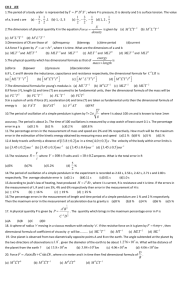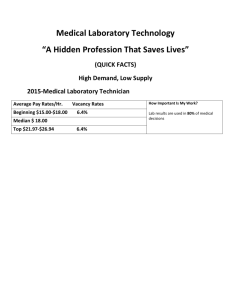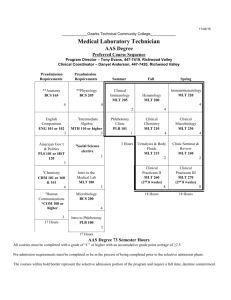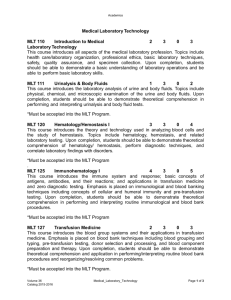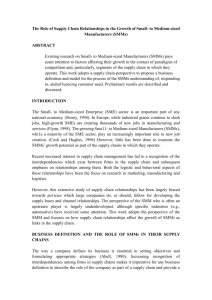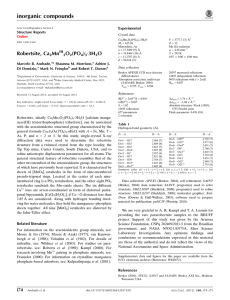manuscript - Edinburgh Research Explorer
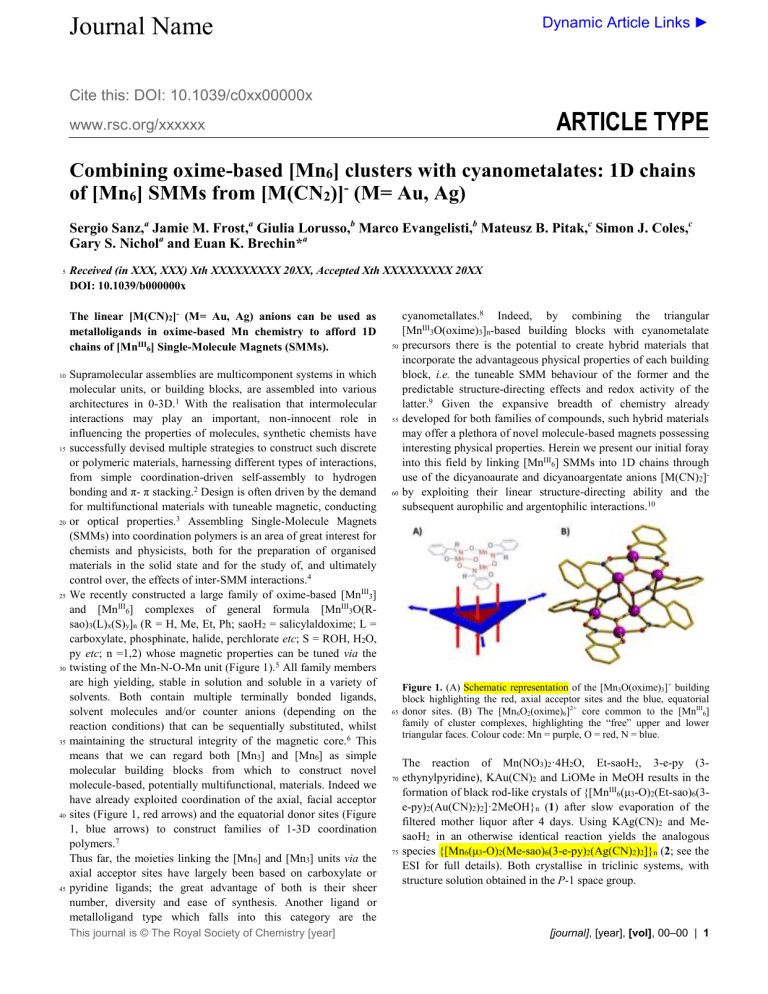
Journal Name
Dynamic Article Links
►
Cite this: DOI: 10.1039/c0xx00000x www.rsc.org/xxxxxx
ARTICLE TYPE
Combining oxime-based [Mn
6
] clusters with cyanometalates: 1D chains of [Mn
6
] SMMs from [M(CN
2
)]
-
(M= Au, Ag)
Sergio Sanz,
a
Jamie M. Frost,
a
Giulia Lorusso,
Gary S. Nichol
a
and Euan K. Brechin*
a b
Marco Evangelisti,
b
Mateusz B. Pitak,
c
Simon J. Coles,
c
5
Received (in XXX, XXX) Xth XXXXXXXXX 20XX, Accepted Xth XXXXXXXXX 20XX
DOI: 10.1039/b000000x
10
15
The linear [M(CN)
2
] (M= Au, Ag) anions can be used as metalloligands in oxime-based Mn chemistry to afford 1D chains of [Mn III
6
] Single-Molecule Magnets (SMMs).
Supramolecular assemblies are multicomponent systems in which molecular units, or building blocks, are assembled into various architectures in 0-3D.
1 With the realisation that intermolecular interactions may play an important, non-innocent role in influencing the properties of molecules, synthetic chemists have successfully devised multiple strategies to construct such discrete or polymeric materials, harnessing different types of interactions, from simple coordination-driven self-assembly to hydrogen bonding and π- π stacking.
2 Design is often driven by the demand
20 for multifunctional materials with tuneable magnetic, conducting or optical properties.
3 Assembling Single-Molecule Magnets
(SMMs) into coordination polymers is an area of great interest for chemists and physicists, both for the preparation of organised materials in the solid state and for the study of, and ultimately control over, the effects of inter-SMM interactions.
4
25
We recently constructed a large family of oxime-based [Mn III
3
] and [Mn III
6
] complexes of general formula [Mn III
3
O(Rsao)
3
(L) x
(S) y
] n
(R = H, Me, Et, Ph; saoH
2
= salicylaldoxime; L = carboxylate, phosphinate, halide, perchlorate etc ; S = ROH, H
2
O, py etc ; n =1,2) whose magnetic properties can be tuned via the
30 twisting of the Mn-N-O-Mn unit (Figure 1).
5 All family members are high yielding, stable in solution and soluble in a variety of solvents. Both contain multiple terminally bonded ligands, solvent molecules and/or counter anions (depending on the reaction conditions) that can be sequentially substituted, whilst
35 maintaining the structural integrity of the magnetic core.
6 This means that we can regard both [Mn
3
] and [Mn
6
] as simple molecular building blocks from which to construct novel molecule-based, potentially multifunctional, materials. Indeed we have already exploited coordination of the axial, facial acceptor
40 sites (Figure 1, red arrows) and the equatorial donor sites (Figure
1, blue arrows) to construct families of 1-3D coordination polymers.
7
Thus far, the moieties linking the [Mn
6
] and [Mn
3
] units via the axial acceptor sites have largely been based on carboxylate or
45 pyridine ligands; the great advantage of both is their sheer number, diversity and ease of synthesis. Another ligand or metalloligand type which falls into this category are the
This journal is
© The Royal Society of Chemistry [year] cyanometallates.
8 Indeed, by combining the triangular
[Mn III
3
O(oxime)
3
] n
-based building blocks with cyanometalate
50 precursors there is the potential to create hybrid materials that incorporate the advantageous physical properties of each building block, i.e.
the tuneable SMM behaviour of the former and the predictable structure-directing effects and redox activity of the latter.
9 Given the expansive breadth of chemistry already
55 developed for both families of compounds, such hybrid materials may offer a plethora of novel molecule-based magnets possessing interesting physical properties. Herein we present our initial foray into this field by linking [Mn III
6
] SMMs into 1D chains through use of the dicyanoaurate and dicyanoargentate anions [M(CN)
2
] -
60 by exploiting their linear structure-directing ability and the subsequent aurophilic and argentophilic interactions.
10
65
Figure 1.
(A) Schematic representation of the [Mn
3
O(oxime)
3
] + building block highlighting the red, axial acceptor sites and the blue, equatorial donor sites. (B) The [Mn
6
O
2
(oxime)
6
]
2+
core common to the [Mn
III
6
] family of cluster complexes, highlighting the “free” upper and lower triangular faces. Colour code: Mn = purple, O = red, N = blue.
The reaction of Mn(NO
3
)
2
·4H
2
O, Et-saoH
2
, 3-e-py (3-
70 ethynylpyridine), KAu(CN)
2
and LiOMe in MeOH results in the formation of black rod-like crystals of {[Mn III
6
(μ
3
-O)
2
(Et-sao)
6
(3e-py)
2
(Au(CN)
2
)
2
]·2MeOH} n
( 1 ) after slow evaporation of the filtered mother liquor after 4 days. Using KAg(CN)
2
and Me-
75 saoH
2
in an otherwise identical reaction yields the analogous species {[Mn
6
(μ
3
-O)
2
(Me-sao)
6
(3-e-py)
2
(Ag(CN)
2
)
2
]} n
( 2 ; see the
ESI for full details). Both crystallise in triclinic systems, with structure solution obtained in the P -1 space group.
[journal] , [year], [vol] , 00
–00 |
1
oxime ligands at a C…C distance of ~3.4 Å. The closest
Mn…Mn separation is ~7.4 Å, somewhat shorter than that in
1 ,
45 presumably as a result of the absence of any interstitial solvent.
Distances between neighbouring Au and Ag ions are ~3.6 Å, within the range expected for auro- and argentophilic interactions.
10
Figure 2.
The structures of complexes ( 1 ; A) and ( 2 ; B). Colour code as
Figure 1. Au = gold, Ag = silver. H-atoms, some C-atoms and solvent molecules have been removed for clarity.
5
The {Mn III
6
} cores in both complexes are analogous to other members of this family 5,6 and comprise two oxo-centred triangular [Mn III
3
] triangles linked along each edge of the triangle and between triangles through the -N-O- moiety of the oxime ligand; the latter also being mediated via two phenolic O-atoms.
10
The triangular faces contain one terminally bonded 3-e-py molecule and two [M(CN)
2
] anions. Interestingly these anions are bonded to different Mn ions in 1 and 2 , as can be seen in
Figure 2; Mn2 and Mn3 in the former and Mn1 and Mn2 in the latter. All Mn ions are in the 3+ oxidation state, as confirmed by a
15 combination of bond-length considerations, BVS calculations, and charge-balance. All are six-coordinate adopting distorted octahedral geometries with their Jahn-Teller axes approximately perpendicular to the [Mn
3
] plane and parallel to the axis of propagation of the chain. The Mn-N-O-Mn torsion angles are
20
31.64°, 30.42° and 39.26°; and 34.95°, 23.78° and 36.15° for 1 and 2 respectively. The former has two angles close to (one above, one below) the 31° mark previously suggested as the tipping point between ferro- and antiferromagnetic nearest-
25 neighbour exchange.
5,6 In general the torsions angles are smaller in 2 than in 1 reflecting the replacement of the larger Et-sao 2with the smaller Me-sao 2. In addition, the angles are somewhat smaller than those seen in their molecular counterparts, likely due to the “ flattening
” influence of the two [M(CN)
2
] ions and the 3e-py ligand that sit on top of the triangular faces. The µ
3
-O 2-
30 which sits at the centre of this triangle lies 0.157Å and 0.073 Å above the [Mn
3
] plane toward the [M(CN)
2
] ions, in 1 and 2 , respectively.
There are several intra- and intermolecular H-bonding interactions: in both, the terminally bonded alcohols H-bond to
35 phenolic and oximic O-atoms (~2.9-3.0Å), with the former also
H-bonded to the MeOH solvent of crystallisation (~2.9 Å) in 1 .
The closest inter-chain interaction occurs between oxime ligands with the C…C distances between neighbouring Ph and Et/Me
40 groups of the order of 3.3-3.9 Å. The closest Mn…Mn separation in 1 is over 10 Å. In
2 the closest inter-molecular interactions occur between neighbouring 3-e-py ligands, and between the terminally bonded MeOH molecules and the Ph rings of the
Figure 3.
Plot of χ
M
T vs. T for complexes 1 and 2 in an applied field of
50
0.1 T. The inset shows the coupling scheme used to fit the data to
Hamiltonian (1). See text for details.
Direct current magnetic susceptibility studies were performed on
55 polycrystalline samples of 1 and 2 in the 5–300 K range in an applied field of 0.1 T. The results are plotted as the
χ
M
T products vs. T in Fig. 3. The 300 K values of 17.8 and 17.5 cm 3 K mol -1 for
1 and 2 respectively are close to the spin-only value of 18 cm 3 K mol -1 expected for six non-interacting high-spin Mn III (3d 4 ) ions with g = 2.0. For 1 the value of
χ
M
T remains relatively constant
60 until ~100 K, rises slightly to a maximum value of 18.0 cm 3 K mol -1 at 80 K, from where it falls abruptly to a value of 3.17 cm 3
K mol -1 at 5 K. The value of
χ
M
T of 2 follows a very similar path in the high temperature (300 - 100 K) region, but deviates at lower temperatures, dropping to a small “plateau” or “shoulder”
65 in the T = 20-10 K interval with a value between 14-15 cm 3 K mol -1 , before dropping more abruptly to reach a minimum value of 10.85 cm 3 K mol -1 at 5 K. Both behaviours are indicative of the presence of competing and weak ferro- and antiferromagnetic exchange interactions. We were able to successfully fit the data
70 for 1 and 2 (down to T = 25 K to avoid the effects of zfs and/or any inter-molecular interactions) adopting the model schematically shown in the inset of Figure 3. The chosen coupling scheme is a reflection of the different Mn-O-N-Mn
75 torsion angles present, in accordance with previous magnetostructural correlations for this family of complexes.
5,6 A fit of the experimental data to a Hamiltonian of the type
2
S
ˆ
1 '
S
ˆ
3 '
)
J
1
( S
ˆ
1
S
ˆ
2
S
ˆ
1
2 J
2
( S
ˆ
2
S
ˆ
3
3
S
ˆ
1
S
ˆ
2 '
S
ˆ
2
S
ˆ
2 '
S
ˆ
2
S
ˆ
1 '
S
ˆ
1 '
S
ˆ
2 '
S
ˆ
3 '
)
B
B g
i
S
ˆ i
2 '
80 where J is the isotropic exchange interaction parameter, Ŝ is a spin-operator, i runs from 1 to 6,
μ
B
is the Bohr magneton, B is the applied magnetic field, g = 2 is the g -factor of the Mn III ions, affords J
1
= +2.56 cm -1 , J
2
= -5.25 cm -1 for 1 , and J
1
= +2.77 cm -1 ,
85
J
2
= -6.17 cm -1 for 2 . The ground state in both cases is an S = 4,
2 | Journal Name , [year], [vol] , 00
–00
This journal is © The Royal Society of Chemistry [year]
state consistent with other family members with similar topologies.
5,6 Isothermal field-dependencies (Figure S1) are also consistent with this picture, showing a tendency to reach a saturation value of ~8
Nµ
B
at higher fields.
5
In order to investigate the possibility of interactions along the chain between different [Mn
6
] moieties we performed ac susceptibility measurements in the 1.8 – 10 K temperature range with a 3.5 G ac field oscillating at frequencies up to 1284 Hz
(Fig. S2). Both 1 and 2 exhibit a clear frequency-dependence in
10 both the real and imaginary components. An Arrhenius plot constructed from the χ′′
M
vs . T data (τ = τ o exp( U eff
/ k
B
T) where τ o is the pre-exponential factor, τ is the relaxation time, U eff
is the barrier to the relaxation of the magnetisation and k
B
is the
Boltzmann constant) gave τ o
= 1.5 x 10 -10 s and U eff
= 39.9 K for
15
1 , and τ o
= 5.4 x10 -10 s and U eff
= 50.7 K for 2 (Figures S3-4). The presence of significant intra-chain interactions between individual
[Mn
6
] moieties would be expected to slow down the spin dynamics at low temperatures and this would be manifested in a smaller frequency shift, k . For the experimentally accessed range
20 of frequencies, using the average value of blocking temperature
T
B
= 2.5 and 3.4 K for 1 and 2 , respectively, the frequency shift of
T
B
is calculated as k = Δ T
B
/( T
B
Δlog f ), where Δ T
B
is the change in T
B
for the frequency change Δlog f = 1.7 and 2.2 for 1 and 2 , respectively. This calculation provides the k = 0.14 and 0.15 for 1
25 and 2 , respectively, which are within the range expected for super-paramagnets and close to those reported for molecular
[Mn
6
] complexes. This suggests that the relaxation is in accordance with SMM behaviour, where for ideal non-interacting superparamagnets 0.1 ≤ k ≤ 1, 11 and is not attributed to long range
30 interactions mediated through the [M(CN)
2
] (M= Au, Ag) units.
Conclusions
Initial reactions combining [ in situ generated] oxime-based
[Mn
3
] n
building blocks with cyanometalate precursors have produced chains of [Mn
6
] SMMs. Their construction highlights
35 the potential of incorporating magnetically tuneable SMM building blocks with the structure-directing effects and redox activity of Prussian Blue materials. The capacity to develop an enormous array of new materials is clear, and such hybrid materials may offer a plethora of novel molecule-based magnets
40 possessing interesting physical properties.
Acknowledgements
We thank MINECO (MAT2012-38318-C03), the EC for a Marie
Curie-IEF to GL (PIEF-GA-2011-299356) and the EPSRC.
45 a EaStCHE M School of Chemistry, The University of Edinburgh, West
Mains Road, EH9 3JJ, Edinburgh, Scotland, UK. E-mail: ebrechin@staffmail.ed.ac.uk
. Tel: +44 (0)131 650 7545. Fax: +44 (0)131
650 6453. b Instituto de Ciencia de Materiales de Aragon (ICMA), CSIC –
50
Universidad de Zaragoza, Depto. Física Materia Condensada, 50009
Zaragoza, Spain. c UK National Crystallography Service, Chemistry, Faculty of Natural and
55
Environmental Sciences, University of Southampton, Highfield Campus,
Southampton, SO17 1BJ, UK
†Electronic Supplementary Information (ESI) available: Experimental procedures and additional magnetic data. See DOI: 10.1039/b000000x/
Notes and references
60
65
§
Crystal data for 1 : C
38
H
39
AuMn
3
N
6
O
9
, M = 1086.23, triclinic, space group P -1, a = 12.9132(3), b = 13.2833(4), c = 13.3983(9) Å, α =
62.714(4), β = 76.424(5),
= 89.144(6) °, V = 1973.96(17) Å 3 , Z = 2,
Absorption coefficient = 4.704 mm
-1
, D c
= 1.828 Mg / m
3 reflections collected, 9025 unique (R int
= 0.0501), 7670 with F
2
, 26779
> 2σ, final
R (F, F 2 >2σ) = 0.0389, wR
2
(all data) = 0.0799, GoF = 1.045, data/restraints/parameters = 9025/0/523.
Diffractometer: Single crystal Xray diffraction data of 1 were collected on a Rigaku AFC12 goniometer equipped with an enhanced sensitivity (HG) Saturn724+ detector mounted at the window of an FR-E+ SuperBright molybdenum rotating anode generator with HF Varimax optics (100µm focus) S.J Coles and
P.A. Gale, (2012) Chem. Sci., (3), 683-689. Cell determination and data
70 collection: CrystalClear-SM Expert 3.1 b18 (Rigaku, 2012). Data reduction, cell refinement and absorption correction: CrystalClear-SM
Expert 3.1 b27 (Rigaku, 2012). Structure solution and structure refinement: SHELX-2013(Sheldrick, G.M. (2008). Acta Cryst. A64, 112-
122). CCDC = 976547.
75
80
Crystal data for 2 : C
34
H
30
AgMn
3
N
6
O
8
, M = 923.33, triclinic, space group
P -1, a = 12.9417(5), b = 12.9939(5), c = 14.0502(6) Å, α = 65.470(4), β =
64.209(4),
= 60.181(4)°, V = 1784.93(15) Å
3
, Z = 2, Absorption coefficient = 1.637 mm
8158 unique (R int
-1 , D c
= 1.718 g / cm
= 0.0430), 6616 with F
3
2
, 29304 reflections collected,
> 2σ, final R (F, F 2 >2σ) =
0.0364, wR
2
(all data) = 0.0752, GoF = 1.058, data/restraints/parameters =
8158/0/473. Single crystal X-ray diffraction data of 2 were collected on an Agilent Technologies Supernova diffractometer using monochromatized Mo-K
α
radiation ( λ = 0.71073 Å). CRYSALISPRO
(data collection, integration and absorption correction) Agilent
85
Technologies, (2011), CrysAlisPro , Agilent Technologies UK Ltd,
Oxford, UK. SHELXTL (structure refinement) Sheldrick, G. M. (2008).
Acta Cryst.
A64, 112–122. SUPERFLIP (structure solution) Palatinus L. and Chapuis G. (2007). J. Appl. Cryst.
40, 786-790. CCDC = 976548.
90
1 Making crystals by design: methods, techniques and applications , ed.
D. Braga and F. Grepioni, Wiley-VCH, Weinheim, 2007.
2 C. Janiak, Dalton Trans.
, 2003, 2781.
3 D. Maspoch, D. Ruiz-Molina and J. Veciana, Chem. Soc. Rev ., 2007,
36 , 770.
95
4 (a) H. Miyasaka and M. Yamashita, Dalton Trans ., 2007, 399; (b),
122 , 163; (b) O. Roubeau and R. Clerac, Eur. J. Inorg. Chem ., 2008,
4325.
5 C. J. Milios, S. Piligkos and E. K. Brechin, Dalton Trans., 2008, 1809.
6 R Inglis, C. J. Milios, L. F. Jones, S. Piligkos and E. K. Brechin,
Chem. Commun ., 2012, 48 , 181.
100
7 See for example: (a) C. C. Stoumpos, R. Inglis, G. Karotsis, L. F.
Jones, A. Collins, S. Parsons, C. J. Milios, G. S. Papaefstathiou and E.
K. Brechin, Cryst. Growth Des ., 2009, 9 , 24; (b) R. Inglis, A. D.
Katsenis, A. Colins, F. White, C. J. Milios, G. S. Papaefstathiou and E.
K. Brechin, CrystEngComm , 2009, 11 , 2117.
105
8 J.-N. Rebilly and T. Mallah, Struct. Bonding , 2006, 122 , 103.
9 (a) M. Nihei, Y. Sekine, N. Suganami, K. Nakazawa, A. Nakao, H.
Nakao, Y.Murakami and H. Oshio, J. Am. Chem. Soc ., 2011, 133 ,
3592; (b) V. Marvaud, C. Decroix, A. Scuiller, F. Tuyèras, C. Guyard-
110
Duhayon, J. Vaissermann, J. Marrot, F. Gonnet and M. Verdaguer,
Chem. Eur. J ., 2003, 9 , 1692.
10 See for example: (a) M. J. Katz, K. Sakai and D. B. Leznoff, Chem.
115
Soc. Rev ., 2008, 37, 1884; (b) R. J. Roberts, X. Li, T. F. Lacey, Z. Pan,
H. H. Patterson and D. B. Leznoff, Dalton Trans ., 2012, 41, 6992; (c)
E. Colacio, F. Lloret, R. Kivekas, J. Ruiz, J. Suarez-Varela, M. R.
Sundberg, Chem. Commun . 2002, 592.
11 L. Lecren, O. Roubeau, C. Coulon, Y.-G. Li, X. F. Le Goff, W.
Wernsdorfer, H. Miyasaka and R. Clérac,
J. Am. Chem. Soc ., 2008,
127, 17353.
This journal is © The Royal Society of Chemistry [year]
Journal Name , [year], [vol] , 00
–00 |
3
